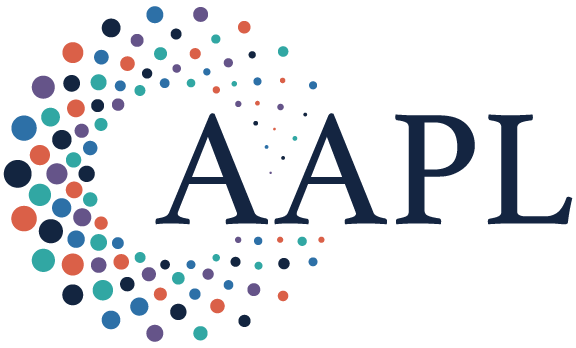Summary:
Even physician leaders, who have just been through the toughest professional year imaginable must be reminded that, when it comes to your death and the death of your loved ones, it is not if but when.
About a thousand years ago, I was the administrator for an otolaryngology department. The department put on a CME course on endoscopic sinus surgery, that attracted everyone from PGY1s to seasoned, community surgeons because it included a cadaver head lab and numerous didactic sessions, culminating with a world renowned cranial base surgeon speaking on the prevention of complications. For this headliner presentation, he initially shared a single thesis for preventing 90+% of the complications in endoscopic sinus surgery and he went through case study, after case study with the conclusion being the same lesson, which went like this…
Wait for it…
“If you can’t see, stop.”
That was it. “If you can’t see, stop.” By the end of the presentation, he had his audience engaged in this auditory repetition exercise, “If you can’t see, stop.”
Some of our most important guidance comes from “well-duh” theses like, “If you can’t see, stop,” or in the case of the one I am peddling these days: At the end of life, comes death. I know, right? At the end of life, comes death. And I will do that skull base surgeon one better, my thesis is true 100% of the time. Mine goes on with more well-duhness that is also true 100% of the time: There are no do-overs in end of life. And: Changed forever, surviving loved ones remain. I call this the Triad of Certainty:
At the end of life comes death
There are no do-overs in end of life
Changed forever, your surviving loved ones remain
I now spend my days teaching people these duh-obvious facts and there is NO shortage of work in this field. Even physician leaders, who have just been through the toughest professional year imaginable must be reminded that, when it comes to your death and the death of your loved ones, it is not if but when.
So, here are your three to-dos:
Load your medical ID details into your smart phone. The first place ED support staff go for information beyond basic ID is the patient’s smart phone. If it has been set up correctly, the smart phone medical ID is accessible even when the phone is locked. This five-minute task could actually save a life, thereby postponing the inevitable death. After you have done yours, make sure that everyone in your family has completed theirs.
Establish your advance healthcare directives, healthcare proxy and back up healthcare proxy, close all the communication loops on this, and make sure the name of your proxy is on your person at all times. Perhaps both in your smart phone medical ID and in your wallet.
Get your personal administrative stuff together so that when you die, your loved ones can focus on the love and the grief rather than being overwhelmed by having to track down account numbers, deeds, titles, and passwords.
Because you are an over-achiever, once you have finished the above for yourself and your loved ones, next turn to implementing a program in your institution to accomplish numbers 1 and 2 for every student, resident, staff, and employee. There is simply no reason that loading one’s smart phone medical ID and completing advance healthcare directives is not part of every medical school, residency and employee orientation program. And if HR or Risk Management gives you the cautionary finger wag, your response is clear. The contents or nature of the actual advance healthcare directives are not the institution’s concern. Some individuals want every life-extending measure, some want none. The fact that advance healthcare directives are done, documented, and communicated for each person in the organization is the only focus.
You know I am right about this. Such a program has duh-obvious practical benefits; every year there is a student, resident and/or employee who has a medical emergency and/or dies. As well, there will be corporate cultural changes from such a program that will only benefit the organization. Physicians and healthcare professionals will be more experienced as they discuss these matters with patients and families, which will lead to greater patient participation in their own care. And, it will help change the culture around end-of-life discussion, preparation and awareness. Because after all, with 100% accuracy: at the end of life comes death; there are no do-overs in end of life; and changed forever the survivors remain.
Jennifer O’Brien is the author of The Hospice Doctor’s Widow: A Journal, an art journal that helps patients with life-limiting conditions and their family caregivers. For more than 30 years she has been a practice management consultant to physicians and served as CEO for two large medical practices. She holds a bachelor’s degree from Boston University and a master’s degree in organization development from Loyola University – Chicago.
For your complimentary At Peace Tool Kit: A Guide to Being at Peace with End of Life click here .
Topics
Integrity
Judgment
Accountability
Related
Championing Physician Leadership Development: AAPL's Five-Decade Commitment Meets Healthcare's Critical Moment“Profiles in Success”: Certified Physician Executives Share the Value and ROI of their CPE EducationHow to Coach Hyperenergetic ExecutivesRecommended Reading
Professional Capabilities
Championing Physician Leadership Development: AAPL's Five-Decade Commitment Meets Healthcare's Critical Moment
Professional Capabilities
“Profiles in Success”: Certified Physician Executives Share the Value and ROI of their CPE Education
Professional Capabilities
How to Coach Hyperenergetic Executives
Professional Capabilities
The Gender Gap
Professional Capabilities
Reflections on Wisdom
Professional Capabilities
Physician Leadership Development: A Comparative Study of Two Approaches


